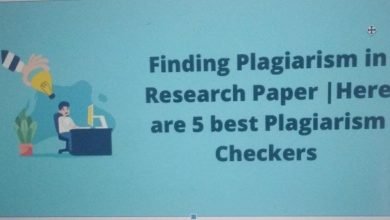News on Student Loan Forgiveness
As the Biden administration tries to identify borrowers who are eligible for student loan forgiveness for public service, tens of thousands more people could soon have their debts forgiven. It’s the Education Department’s latest move to help borrowers who are saddled with billions of dollars in student loan debt.
According to the Education Department, up to 100,000 student loan borrowers are eligible for forgiveness through the Public Service Loan Forgiveness program, compared to the estimated 550,000 who would be awarded forgiveness sooner following revisions to the program last fall. The current tranche of loans totals about $6.2 billion in dischargeable debt.
The Biden-Harris administration is delivering on that pledge by assisting an increasing number of qualifying debtors in obtaining loan forgiveness. The Biden administration stated in October that the program will be overhauled, allowing borrowers to get credit for loan repayment periods that they might not have otherwise qualified for. Only 16,000 borrowers had ever received forgiveness through the program prior to the regulation revisions. As of January, the modifications had assisted over 70,000 borrowers in receiving forgiveness worth approximately $5 billion.
The newest effort by the Biden administration to help student loan holders find relief is the identification of 100,000 borrowers as eligible for forgiveness under the public service program.
During President Joe Biden’s first year in office, almost $15 billion in federal student debts were forgiven for 675,000 borrowers, according to the Education Department. This includes $1.5 billion for borrowers who were discovered to have been taken advantage of by their institutions, $7 billion for over 400,000 permanently crippled borrowers, and $1.26 billion for over 100,000 borrowers who attended the now-defunct ITT Technical Institute.
However, while the Biden administration has been increasing relief for some student loan holders, several organizations and lawmakers believe that the measures so far are insufficient. In the United States, student loan debt totals more than $1.7 trillion. More than 43 million people owe money on federal student loans.
Senate Majority Leader Chuck Schumer and Massachusetts Senator Elizabeth Warren have called on the Biden administration to forgive $50,000 in student loan debt.
Mr. Biden has voiced support for the cancellation of student loan debt in general, but has asked Congress to bring him legislation. Democratic politicians, on the other hand, contend that Biden has the right to cancel student loan debt unilaterally.
Other Recent Developments in Student Loan Forgiveness
The Justice Department and the Department of Education are investigating whether the President has the legal ability to erase up to $50,000 in federal student loan debt by executive action. There is no set date for the release of these reports. Expect some delays as key policy advisors in the concerned departments are yet to be confirmed by Congress.
Regardless of whether student loan forgiveness is accomplished through executive action or legislation, the White House’s Domestic Policy Council will assess how it should be targeted.
Scams promising debt forgiveness in exchange for a fee should be avoided by borrowers. When it comes to student loan forgiveness, it will most likely be automatic and free. On the StudentAid.gov website, the US Department of Education will issue an update.
The US Department of Education has lately taken a few measures toward giving clear legal authorization for student debt relief:
Total and Permanent Disability Discharges are being restored.
Because they neglected to file the annual earnings paperwork during the pandemic, several disabled borrowers who qualified for a Total and Permanent Disability Discharge had their payback obligations revived. For 230,000 borrowers with Total and Permanent Disability Discharges, the US Department of Education will reverse the reinstatements and provide other student loan debt relief.
Payment Pause and Interest Waiver
Until January 31, 2022, borrowers who have a federally owned federal student loan are eligible for administrative forbearance and an interest waiver. Borrowers with defaulted Federal Family Education Loan Program (FFELP) loans were not eligible since they were held by guarantee agencies on behalf of the US Department of Education. More than one million FFELP borrowers will now be eligible for the federal student loan payment halt and interest waiver, thanks to a decision by the US Department of Education. Borrowers who defaulted on their FFELP loans during the epidemic will have their loans reinstated and the defaults removed from their credit reports.
Forgiveness of Student Loans Without Paying Taxes
The tax treatment of student loan debt forgiveness was also addressed by Congress. Through December 31, 2025, the American Rescue Plan Act of 2021 included tax-free status for all student loan forgiveness and debt elimination. Since most other types of student loan cancellation already have tax-free status, this only affects forgiveness after 20 or 25 years in an income-driven repayment plan. However, whether through presidential action or new legislation, it sets the stage for future student debt forgiveness.
In the Consolidated Appropriations Act of 2021, Congress granted tax-free status to employer-paid student loan repayment assistance programs, or LRAPs, until December 31, 2025.
The Biden administration and Congress have yet to take any action on student loan discharge in bankruptcy.
Related Post:What Happens if you Fail a Class in College ?
Future Prospects for Student Loan Forgiveness
The next event will be the release of studies by the US Departments of Education and Justice on the executive branch’s legal authority to execute extensive loan forgiveness without the approval of Congress.
These analyses will almost certainly conclude that the President lacks the legal power to use executive action to implement broad student loan forgiveness. This will put pressure on Congress to act. In the fall, as part of a budget reconciliation bill, Congress may explore legislation to cancel student loans. The Biden administration has stated repeatedly that the President will sign a bill that would grant all borrowers $10,000 in federal student loan forgiveness.
What Should Borrowers Do If They Can’t Pay Back Their Loans?
Borrowers should avoid taking any hasty decisions in the hopes of getting their loans forgiven. At this time, it does not appear that widespread student debt forgiveness is likely. Even if Biden or Congress pass a scheme, loan forgiveness eligibility and amounts are likely to be limited.
Consolidation
Borrowers with FFELP loans should consider merging them into a Federal Direct Consolidation Loan if the loan forgiveness is only available for federal student loans. Consolidating FFELP loans may also qualify them for the payment pause and interest waiver, which is available until May 1, 2022.
Consolidation’s biggest danger is that it resets the monthly payment clock in an income-based repayment plan, making it impossible to qualify for 25-year forgiveness. In addition, if a student borrower receives FFELP lender discounts, they will forfeit those savings if they combine. Borrowers who sign up for AutoPay receive a 0.25 percent interest rate decrease on Direct Loans, but no further reductions are available. Consolidation has no notable drawbacks elsewhere.
Refinance
Borrowers considering refinancing federal loans into private loans in order to lock in current low interest rates should hold off. Through May 1, 2022, loans that are qualified for the payment delay and interest waiver effectively have a 0% interest rate. In the short term, refinancing will raise the borrower’s costs. Borrowers with high interest rates may want to consider refinancing their student loans. Borrowers with private student loans, on the other hand, do not risk losing their forgiveness if they refinance into a new private loan.
Instead of making extra payments on their student loans, borrowers who still have jobs and are able to continue making payments should save the money or pay down other debt. It’s a wonderful time to start or add to your emergency fund. In general, if a borrower expects to receive loan forgiveness, they should not make extra payments if they are not compelled to do so, as this will diminish the amount of forgiveness they will receive in the end. Borrowers can utilize the money saved to pay down debt after the terms of student loan forgiveness are published.
There are currently no federal student loan forgiveness schemes in place.
Borrowers can stop making federal student loan payments during the payment pause and interest waiver period, which has been extended until May 1, 2022, if they anticipate receiving loan forgiveness under President Biden’s administration. Due to the uncertainty surrounding the cancellation of student debt, borrowers may prefer to continue making payments.
However, some borrowers may be eligible for a student loan forgiveness program that already exists. Borrowers who work full-time in a qualifying public service employment, for example, are eligible for Public Service Loan Forgiveness (PSLF). After completing 120 qualifying payments, a borrower is eligible for loan forgiveness.
Borrowers can still earn credit toward PSLF during the payment halt. They will earn qualifying payment credit as long as they continue to meet the eligibility standards and submit the PSLF form.
Borrowers who will not be eligible for loan forgiveness after the relief period has expired should choose an income-driven repayment plan. Monthly payments are adjusted based on the borrower’s annual income in an income-driven repayment plan. The loan is canceled after a set amount of time (20 or 25 years).
What about a large-scale student loan forgiveness program?
Several Democratic members of Congress have long called for universal student loan forgiveness for all federal student loan borrowers, and Biden ran on the promise in 2020. Biden ordered a legal assessment in April 2021 to determine his ability to eliminate student loan debt by executive action. The review’s findings have remained unpublished for nearly a year.
Related Post:Lee Strasberg Theatre and Film Institute Acceptance Rate: Admissions and GPA
“The fact that it’s taking so long shows it won’t be as straightforward as people think,” says Mark Kantrowitz, a top national student loan expert. “If the evaluation finds that you do have the authorization, they should be able to do it rather fast.”
Things might get complex if Biden doesn’t have the administrative authority to impose forgiveness without the approval of Congress. “Coming up with an increase in revenue and decreases in expenditures to match the costs of forgiveness will be the limiting issue,” Kantrowitz argues. While no timetable has been set, Kantrowitz believes the forthcoming midterm elections will create a sense of urgency. Everything will finally come down to the conclusions of the legal review in terms of student loan cancellation in the near future.
More than $1 billion in student loan forgiveness is on the way for Navient borrowers.
Several claims of dishonest and discriminatory lending practices against Navient, a student loan servicer, were addressed in a $1.85 billion settlement. Attorneys general from 38 states and the District of Columbia claimed that the servicer issued exploitative private loans and forced borrowers into costly forbearance periods.
Navient will be compelled to forgive $1.7 billion in private student loans for more than 60,000 borrowers who took out private loans for for-profit institutions under the terms of the settlement deal. Individual reparation payments of $260 will also be distributed by Navient to about 350,000 federal borrowers who were misled into hardship forbearance periods.
Borrowers do not need to take any more action to get the payments or forgiveness at this time. In spring 2022, the settlement administrator will send a postcard to affected federal borrowers, and private borrowers will get a notice from Navient regarding the loan cancellation by July 2022.
Related Post:Accelerated MBA Programs: Pros, Cons and Tuition







